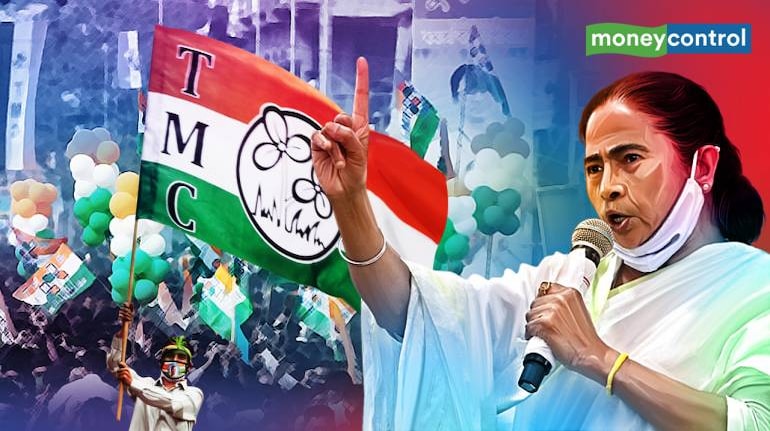



In political colloquialism, whenever there is a striking departure of a singular leader (Jyotiraditya Scindia) or a mass exodus (Meghalaya MLA’s of the Congress joining the Trinamool Congress (TMC)), the cliché uttered is: ‘the rats are deserting a sinking ship’. It is partially true, the capsizing Titanic part of it. But calling them rodents may be an exaggeration.
In India, ideological fidelity is an oxymoron. Let’s face it, our politics is purely transactional. The Right in India is defined not by its love for free markets and less government, but by its religious doctrine of extreme Hindutva, national security, restorative nostalgia, and nativism. The Left, for its voluble sympathy for Maoist rebels, anti-Americanism, antediluvian communist de-growth model, and minority protection. That leaves the centre, which had become India’s default option under the Congress’ inclusive political umbrella.
But with the rise of multiple regional parties, each doing a copycat manifesto pledging commitment to secularism, socialism, and social justice, it has become a crowded square. Taking full advantage of this ideological amorphousness is the TMC’s Mamata Banerjee. Her target; the severely-atrophied Congress.
The repercussions of this grand strategy of appropriating Congress leaders one-by-one of its own splinter group could be epochal. The reason why many Congress leaders (Luizinho Faleiro, Sushmita Dev, Kirti Azad, etc.) are merrily dancing to Didi’s (as Banerjee is referred to by her supporters) drumbeat is because joining the TMC is not causing a bitter heartburn unlike playing footsie with the ‘communal nemesis’ BJP. Joining the TMC is akin to leaving Facebook for WhatsApp.
Banerjee is hoping that the latter’s market valuation will soon tip over that of the parent company. Her comment in Mumbai that “there is no UPA” (after meeting Nationalist Congress Party (NCP) leaders Sharad Pawar and Sanjay Raut) insinuates at the Congress-led coalition. The TMC is creating an alternative arrangement, and wants to lead it.
While it is understandable that the Congress targets the BJP relentlessly given their historical rivalry, it has made the cardinal mistake of underestimating its knavish allies. It has ignored its own political history. The fact is the Jana Sangh/Bharatiya Janata Party’s meteoric rise began after the Congress was first damaged by non-BJP regional formations: The Janata Party in 1977 (Jayaprakash Narayan), VP Singh in 1989, and the rise of the Samajwadi Party, the Bahujan Samaj Party, and the Rashtriya Janata Dal following the Mandal agitations.
A bruised Congress then ceded substantial space to an industrious BJP which stepped up on aggressive majoritarianism to further cripple the slumbering centrist party. The TMC’s new outreach, allegedly curated by Prashant Kishor, is the biggest challenge the Congress faces of a serious internal erosion since 1989.
The TMC has an ambitious destination; become the second-largest political party (propelling Didi to become Prime Minister in a hung Parliament). Discerning observers would have noticed that it has already checkmated the BJP by doing a reverse migration of leaders back to the TMC after its hurricane sweep in the West Bengal assembly elections. At stake is 42 Lok Sabha seats in West Bengal; and the Congress currently has 52 LS seats. Do you get the drift?
So what should the Congress do to sandbag the ferocious onslaught by the Bengal behemoth? It needs to build hope — and to build hope, it has to change. Now!
In one of its recent issues The Economist (it has endorsed the Congress in practically every general election) says, “The next general elections is about three years away. It is not too late for Congress to become a big-tent national party capable of representing all Indians, as its founders intended”. The BJP is far from insurmountable, and invulnerable. It can be defeated. But the hard truth that the Congress must accept is that there is visceral disillusionment with the grand old party.
The party is struggling; it has not won an absolute majority since 1984. In about eight states (Uttar Pradesh, Bihar, Odisha, West Bengal, Tamil Nadu, Andhra Pradesh, Telangana, and Gujarat) with 286 Lok Sabha seats it is a spent force. It needed an epiphany; it got it from an unexpected benefactor — Prashant Kishor.
Kishor may have made one fatal miscalculation in his Operation Mamata; his assumption that the Congress will just wither away, succumbing tepidly to his grandiose designs. He has, on the contrary, awakened the sleepy, and somnolent giant. Two recent events manifest an unusually combative Congress.
First, the Congress promptly reassembled its traditional allies such as the Dravida Munnetra Kazhagam, the National Conference, the CPI(M) (at the national level), in a quick bid to nip the TMC enterprise in the bud. Most importantly, among them was also both Pawar and Raut, who had momentarily buoyed TMC hearts. But this is realpolitik, and it’s never linear. Congress President Sonia Gandhi’s decision not to invite the TMC even as a perfunctory gesture is a declaration of war.
Second, Rahul Gandhi threw a curve ball at the BJP, by belatedly biting the bullet on the Hinduism vs Hindutva debate. It is the elephant in the room that the Congress has imprudently dodged with disastrous results. It showed a rare pragmatic risk-taking. Judging by initial reactions, the BJP appears discombobulated.
Those who think that the 2024 general elections is a slam-dunk for the BJP, may be guilty of overestimation. The assembly elections this year, including in UP, appear fluid. In repositioning the TMC, Kishor may have inadvertently rekindled the Congress.
Sanjay Jha is former National Spokesperson of the Congress, and author of The Great Unravelling: India After 2014. Twitter: @JhaSanjay.
Views are personal and do not represent the stand of this publication.
Discover the latest Business News, Sensex, and Nifty updates. Obtain Personal Finance insights, tax queries, and expert opinions on Moneycontrol or download the Moneycontrol App to stay updated!
Find the best of Al News in one place, specially curated for you every weekend.
Stay on top of the latest tech trends and biggest startup news.